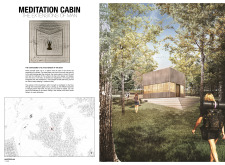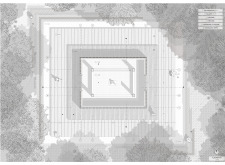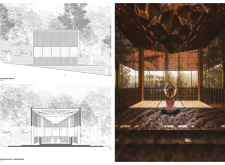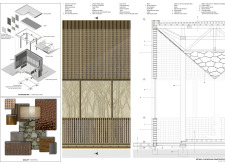5 key facts about this project
The Meditation Cabin serves as a quiet retreat, designed to encourage connection with the surrounding environment. Situated in a peaceful area, it functions as a space for meditation and reflection. The design concept revolves around the idea that the cabin is an extension of the human body, enriching the sensory experience and emotional connection for its users.
Conceptual Framework
The design integrates various forms that work in harmony to create a sense of bodily extension. When entering the cabin, people find themselves in a space where the roof symbolizes the head, and the windows act as eyes, allowing light to enter gently. The walls invite touch, providing a cool sensation, while the ground fosters a feeling of being anchored to the earth. Each of these elements is thoughtfully arranged to promote safety and introspection, similar to the protective environment of a womb.
Materiality
The choice of materials significantly shapes the atmosphere within the Meditation Cabin. Translucent glass bricks feature prominently, allowing light to disperse throughout the interior. This effect not only creates a warm and inviting space but also connects users visually with the outside world. The design includes a reflective pyramid element that draws the eye upward, enhancing the interaction between light and space.
Spatial Dynamics
The arrangement of space within the cabin is designed to stimulate the senses and promote a meditative atmosphere. The exterior, characterized by its soft appearance, allows light and shadows to play across surfaces, contributing to a serene setting. Architectural features are strategically placed to support relaxation and mindfulness. Together, these elements work to encourage deep reflection away from the distractions of everyday life.
Inward Focus
The design places a strong emphasis on personal contemplation. Openings and reflective surfaces direct attention inward, inviting users to explore their thoughts and emotions. The interior layout is simple and unobtrusive, promoting a sense of calm. This thoughtful configuration encourages occupants to engage fully with their inner selves, making the cabin an effective space for meditation and quietude.






















































